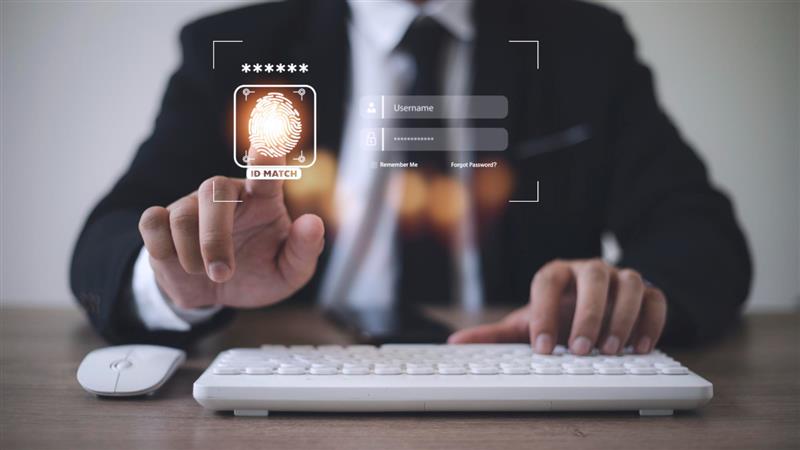Every login today represents a choice between convenience and control; a tension that sits at the heart of biometric authentication vs password debates. As security teams, we feel that tension every day. Passwords still dominate most enterprise environments, but they are also the cause of many breaches.
We have all seen it happen. A single reused password gives attackers a free pass into critical systems. Yet users still prefer the convenience of “12345” over complex strings that are impossible to remember. Biometrics, on the other hand, promise something better, speed, simplicity, and no more remembering. But they come with new risks many organizations underestimate, especially when comparing biometric authentication vs password strategies in real environments.
We believe the real question is not whether passwords are outdated or biometrics are perfect. The real question is: how do we create access that feels effortless but stays secure? That’s what this article explores, along with how AuthX helps enterprises move from passwords to confidence through better enterprise authentication methods and the shift toward passwordless authentication.
Passwords: Familiar but Flawed
Passwords have been with us for decades. They are the simplest form of identity verification: something you know. They work across every platform, cost almost nothing to deploy, and don’t need special hardware. But they also fuel the long-running biometric authentication vs password argument because their weaknesses are now impossible to ignore.
Here’s what makes them so vulnerable:
- Password reuse across systems opens multiple doors with one stolen key.
- Phishing attacks trick employees into sharing credentials.
- Brute-force attempts take advantage of weak, guessable passwords.
- Human behaviours work against us; sticky notes, shared accounts, or temporary passwords that stay forever.
- IT overhead piles up from password resets, forgotten logins, and recovery tickets.
The result? Passwords now sit at the centre of failing enterprise authentication methods, forcing companies to explore passwordless authentication solutions that reduce friction and risk.
Biometric authentication vs password authentication is a topic that keeps surfacing in boardrooms because traditional login journeys simply don’t scale.
Biometrics: Fast, Frictionless, and the Future
Biometrics introduce a completely different idea of authentication: something you are. It could be a fingerprint, a face scan, an iris, or even a voice pattern.
When done right, biometric authentication makes access nearly effortless. Users simply touch, look, or speak to prove their identity. Most modern devices store an encrypted biometric template locally and use it to unlock a private key. It feels like magic compared to typing passwords, fuelling the rise of passwordless authentication conversations and the debate of biometric authentication vs password in enterprise programs.
Why enterprises love Biometrics:
- Harder to phish or steal.
- No passwords to remember or reset.
- Faster onboarding and login experiences.
- Ideal for mobile, remote, or large-scale workforces.
However, convenience can’t blind us to real-world risks. Biometric traits are permanent; you can change a password, but not your face or fingerprint. A breach involving biometric data has a lasting impact, which is why biometric data protection must remain a top priority.
There are also accuracy and accessibility challenges. False rejections frustrate users. Inconsistent readings affect people with certain disabilities or skin tones.
The takeaway? Biometrics are a powerful step forward, but they must be handled with care and combined with other layers of protection aligned with NIST authentication guidelines and modern enterprise authentication methods.
Passwords vs Biometrics
| Aspect | Passwords | Biometrics |
|---|---|---|
| Factor Type | Something you know | Something you are |
| Ease of Use | Remembering, resetting | Quick, seamless |
| Security Risks | Phishing, reuse, brute force | Spoofing, biometric data theft |
| Revocability | Easy to reset | Permanent if compromised |
| Privacy | Lower regulatory risk | Higher privacy scrutiny |
| Deployment | Works anywhere | Requires sensor or hardware |
| Best Use Case | Legacy or low-cost systems | Modern devices, passwordless MFA |
This comparison table is the foundation of biometric authentication vs password conversation. Both have strengths. Both have weaknesses. Passwords are easy to revoke and deploy, while biometrics deliver convenience. But neither alone solves the enterprise access problem.
Combining Strengths with Device-Bound Security
Industry guidance from NIST authentication guidelines and FIDO2 authentication standards agrees on one point: biometrics should not stand alone. The most secure model is a combination of something you are (biometric) and something you have (a device or token).
This is where passkeys come in, and organizations increasingly ask, what is passkey authentication and how it improves security. Passkeys are cryptographic keys stored on the user’s device and unlocked by a biometric or a local PIN. They resist phishing because there’s no shared secret to steal, making them core to passkey authentication and modern passwordless authentication solutions.
Apple, Google, and Microsoft are championing this device-bound approach. It’s secure, user-friendly, and designed for the passwordless future built on passwordless IAM and adaptive identity controls.
The Real Risks Enterprises Can’t Ignore
Even with strong encryption, enterprises must be careful with how they deploy biometrics and passwords together. Below are real-world risks that frequently impact enterprise authentication methods:
- Biometric data breaches are irreversible. Once a fingerprint template leaks, it can’t be reset.
- Privacy laws demand explicit consent. Mishandling biometric data can lead to legal and reputational damage.
- Weak sensors or no liveness detection can let spoofers bypass facial or fingerprint scans using fake inputs.
- Password reuse and shadow IT still create backdoors that undermine even advanced systems.
This is why simply debating biometric authentication vs password is not enough; the real challenge is poor architecture and lack of governance.
The Future Is Not “Passwords or Biometrics”; It’s Passwordless
The conversation shouldn’t be about replacing passwords with biometrics. The future lies in passwordless authentication, where both factors work together under a stronger model aligned with fido2 authentication and NIST authentication guidelines.
Teams often ask: what is passwordless authentication?
It’s an authentication model that uses device-bound, biometric-unlocked credentials like passkeys, hardware tokens, or secure mobile MFA, eliminating passwords entirely.
We’ve seen enterprises cut friction dramatically after switching to passwordless authentication solutions, reducing IT overhead and improving user experience.
This shift supports:
- Stronger security with no shared secrets.
- Seamless employee experience (tap, scan, or approve).
- Compliance-ready with complete audit trails.
- Lower IT and support costs.
- Integration with SSO and passwordless IAM.
This approach is not theoretical. Companies are already doing it, and AuthX is helping them lead that transformation.
How AuthX Helps You Get There ?
At AuthX, we help enterprises take a practical path toward passwordless security. Our platform supports both passkey authentication and biometric authentication, allowing organizations to modernize their enterprise authentication methods without disruption.
AuthX brings together biometric authentication, mobile MFA, hardware tokens, and SSO integration under one unified access layer. Our adaptive authentication policies enforce step-up verification only when needed, while adaptive multi factor authentication adds additional protection during high-risk events.
This step-by-step approach helps companies adopt passwordless IAM without breaking existing workflows.
Key Takeaways
- Passwords remain familiar but risky.
- Biometrics improve usability but introduce privacy concerns.
- The strongest solution is passwordless authentication that combines biometrics, device trust, and adaptive controls.
- AuthX enables that transition without disrupting existing workflows.
We often remind security leaders that access should feel invisible to users but impenetrable to attackers. That balance defines the next era of enterprise identity.
Move Beyond Passwords with AuthX
It’s time to stop choosing between convenience and security. With AuthX, enterprises can have both: secure, biometric-based access that eliminates passwords and supports passkey authentication, adaptive multi factor authentication, and compliant passwordless IAM.
If your organization is ready to move beyond passwords, we’d love to show you how.
FAQs
Are biometrics safer than passwords?
They are safer against phishing and reuse attacks, but only when stored securely and combined with device-level protection.
Can biometric data be stolen?
Yes, which is why it should only be stored as encrypted templates locally, never as raw data on servers.
What’s the best approach for enterprises?
Move toward passwordless models that combine biometrics, device verification, and adaptive authentication.
How does AuthX enable this transition?
AuthX provides an enterprise-ready platform for biometric authentication and mobile access management that removes the risks of traditional passwords while keeping control centralized.














